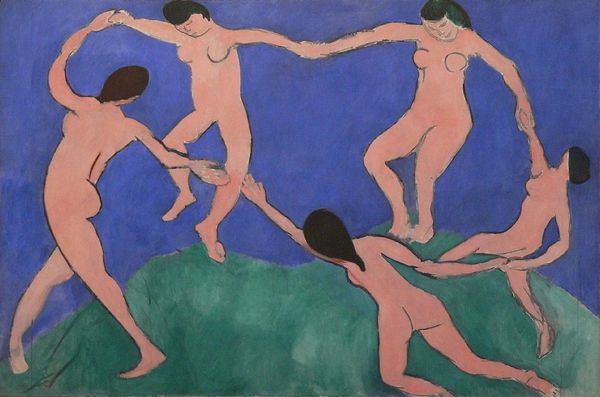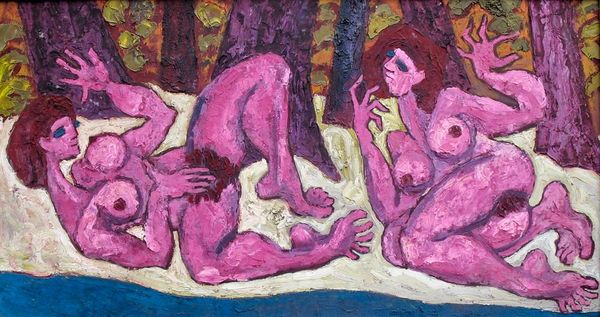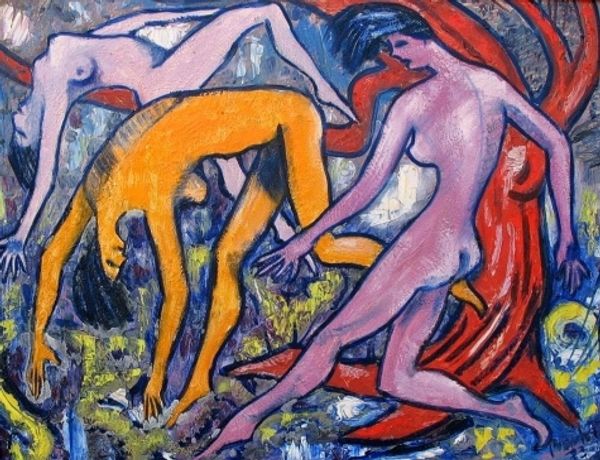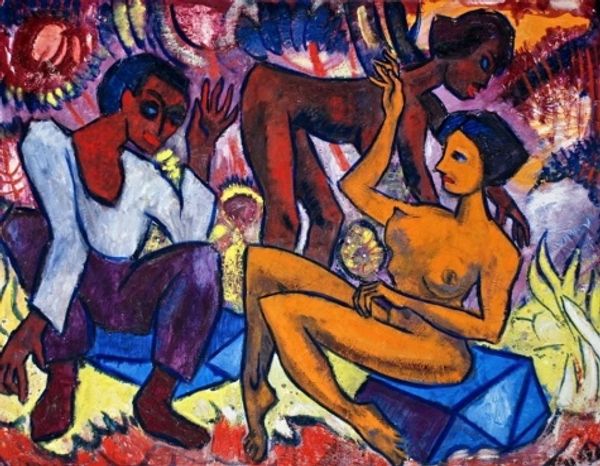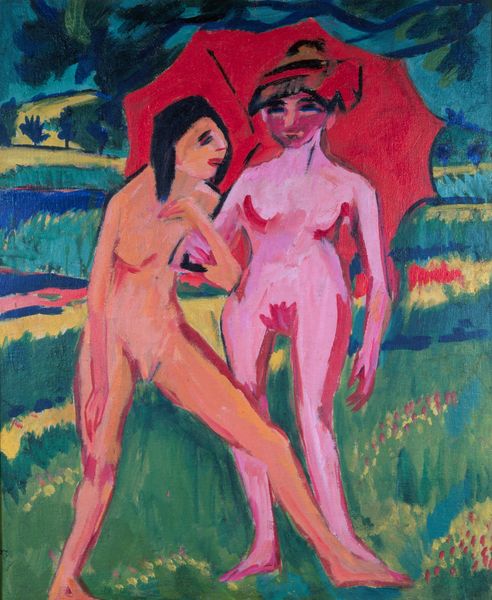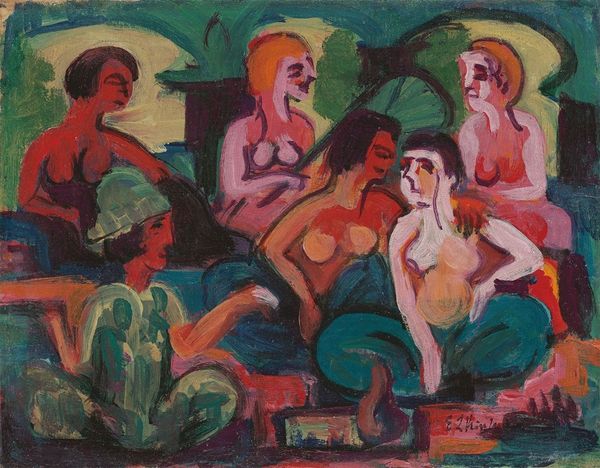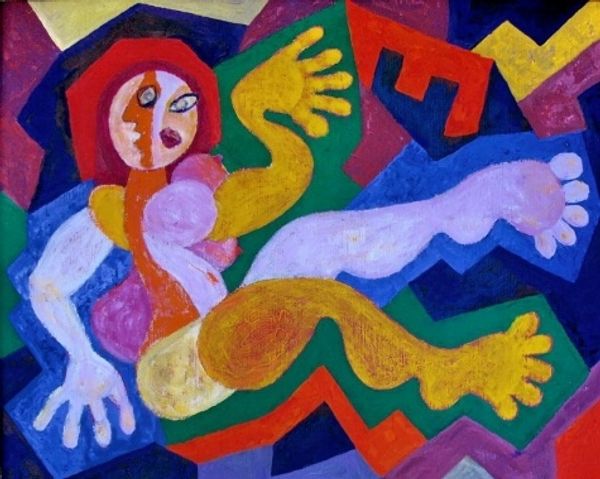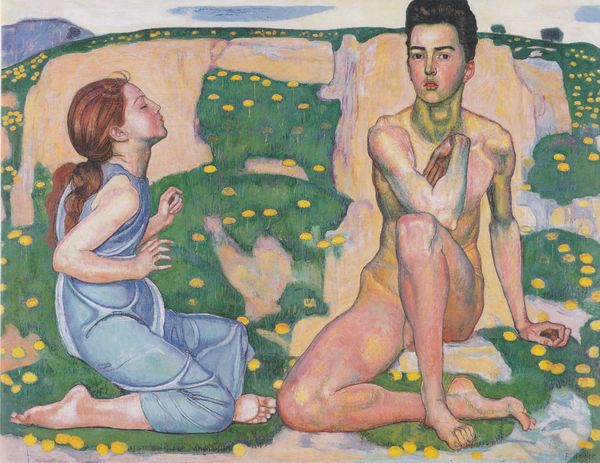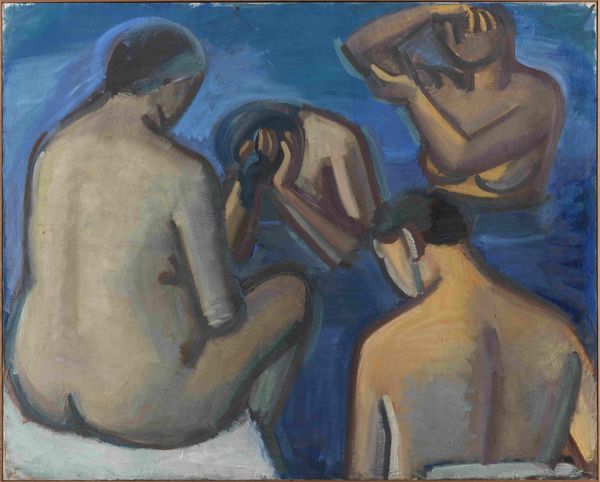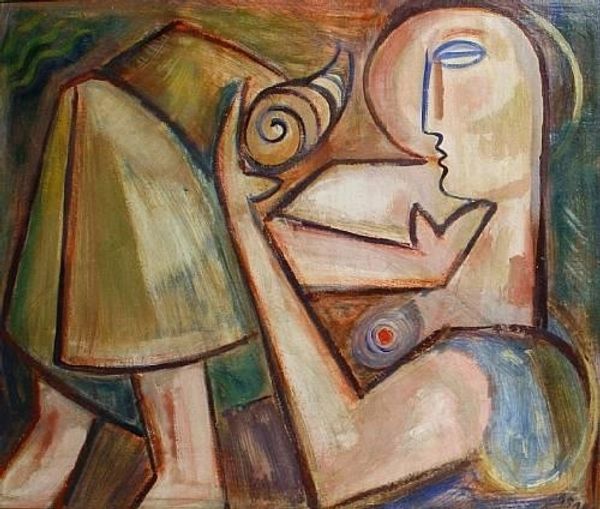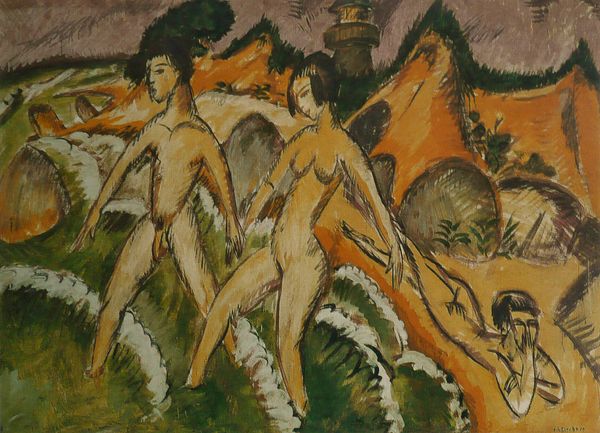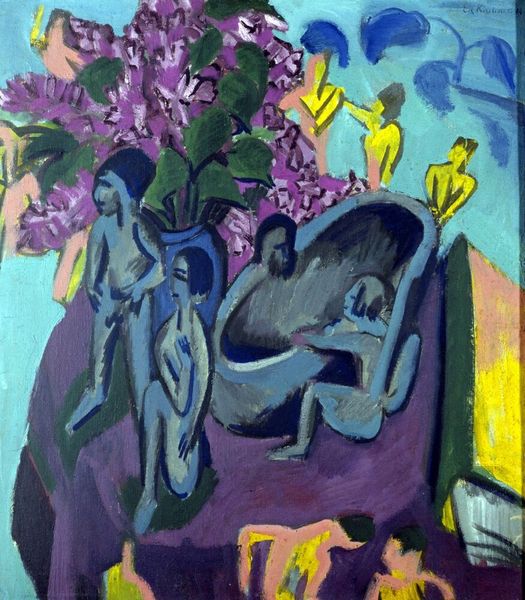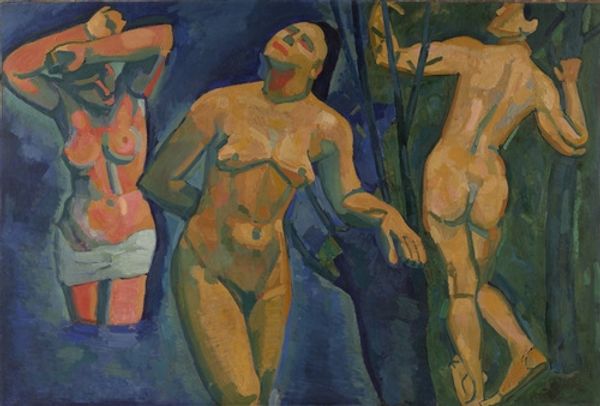
oil-paint
#
oil-paint
#
landscape
#
german-expressionism
#
figuration
#
neo expressionist
#
expressionism
#
genre-painting
#
expressionist
Copyright: Public Domain: Artvee
Curator: Ernst Ludwig Kirchner's 1929 oil painting, "Tanzgruppe," presents us with an intriguing study of figures in motion. Editor: It's arresting! The stark lines and jarring color combinations really unsettle me; it feels incomplete somehow. Curator: I'd argue that feeling is precisely the point. Look at the raw application of paint and the simplification of forms. Kirchner isn’t aiming for realism, but rather trying to capture the essence of the dance, its energy, the emotional experience. Think of the labor behind these expressive strokes. Editor: Perhaps, but the distortion of the figures...see how the limbs are elongated, almost grotesque? That's Expressionism in full force, pushing past mere representation. It also plays with positive and negative space; observe how the green background seems to almost consume the dancers, merging figures with ground. Curator: Absolutely, and we must remember Kirchner's historical context. He was grappling with the aftermath of war and societal upheaval. This 'dance' becomes symbolic—is it celebration or a frenzied escape? What sort of work goes into masking post-war trauma in 1920s Germany? The figures also appear fragmented, a visual echo of a fractured society finding pleasure wherever they can find it. Editor: Yes, but before any of that, consider the visual weight. The composition itself pushes the viewer’s eye in a circle, mimicking the implied movement. Note too how the darker hues—especially those blues—anchor the otherwise vibrant scene, giving gravity to the ecstatic release. It is through the pure pictorial architecture that meaning takes hold. Curator: Indeed, and the very materials used-- the coarseness of the oil paint applied so viscerally to canvas speaks to the larger project of expressionism itself, challenging the very foundations of academic, socially accepted artwork in favor of something urgent and revolutionary. It's not simply a painting of dancers but a material manifestation of an era grappling with profound change, created through intense creative and physical labor. Editor: Reflecting upon this, Kirchner offers us a unique visual rhythm. We are pulled in by a sense of unease that yields, upon closer inspection, to the technical genius that lies at the heart of his painting. Curator: Considering this dance in its social context and appreciating the work that went into the picture's creation illuminates Kirchner’s dedication to art's social utility: that art can make people look at themselves, and their moment, differently.
Comments
No comments
Be the first to comment and join the conversation on the ultimate creative platform.
